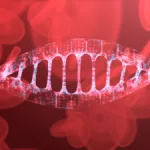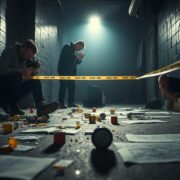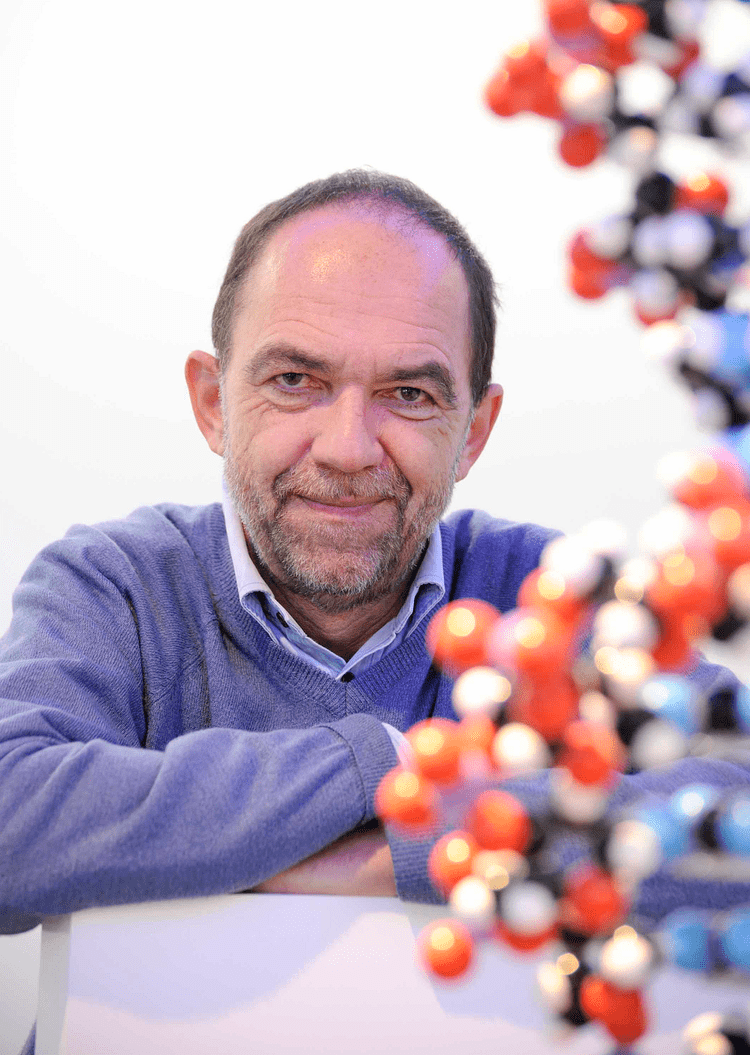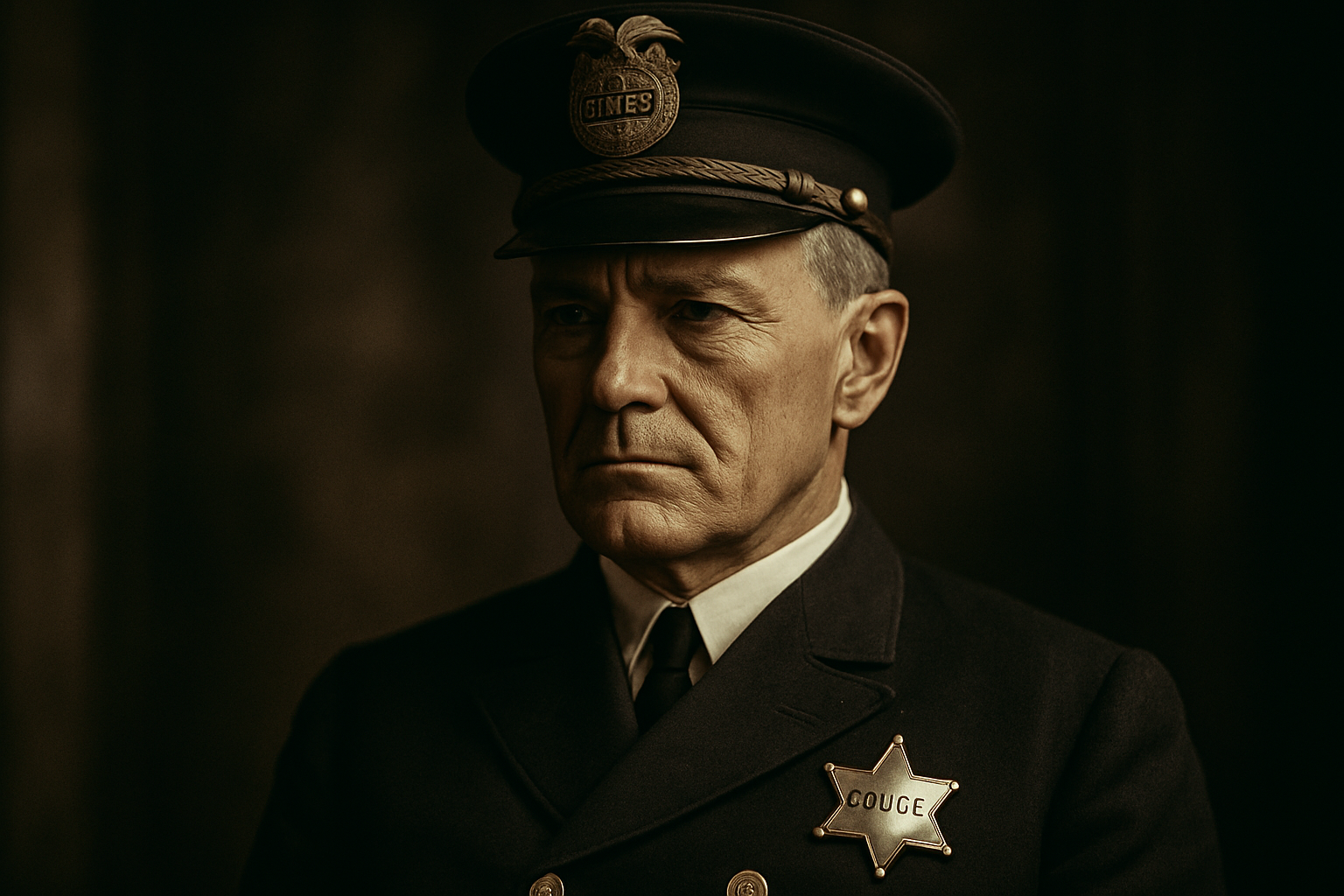Fifty million lives were changed through a single scientific breakthrough. Professor Sir Alec Jeffreys unlocked the power of DNA DNA, or Deoxyribonucleic Acid, is the genetic material found in cells, composed of a double helix structure. It serves as the genetic blueprint for all living organisms. Read Full Definition fingerprinting in the 1980s, giving forensic science
DNA, or Deoxyribonucleic Acid, is the genetic material found in cells, composed of a double helix structure. It serves as the genetic blueprint for all living organisms. Read Full Definition fingerprinting in the 1980s, giving forensic science
DNA fingerprinting stands as the gold standard for solving criminal cases and confirming biological relationships. The University of Leicester laboratory witnessed history when Jeffreys’ work led to the first-ever exoneration using DNA evidence

Professor Sir Alec John Jeffreys is a renowned British geneticist whose groundbreaking contributions have revolutionized the fields of genetics and forensic science. With his pioneering work in genetic fingerprinting and DNA profiling
Discover the remarkable journey of Professor Sir Alec Jeffreys – from early research breakthroughs to creating forensic techniques that transformed criminal justice forever. His story reveals how scientific curiosity and rigorous methodology combined to reshape our understanding of human identity.
- Early Life and Academic Journey of Sir Alec Jeffreys
- The Path to DNA Fingerprinting Discovery
- First Real-World Applications
- Technical Evolution of DNA Analysis
- Beyond DNA Fingerprinting
- Contributions to Academic Research
- Mentoring Future Scientists
- Published Works and Patents
- Research Methodology Innovations
- Teaching Philosophy
- Recognition and Scientific Legacy
- Impact on Modern Forensic Science
- Revolutionizing Criminal Investigations
- Influence on Legal Systems Worldwide
- Further Reading & Sources
- Conclusion
- FAQs
Early Life and Academic Journey of Sir Alec Jeffreys
Born on 9th January 1950 in Oxford, Oxfordshire, England, Alec Jeffreys grew up in a middle-class family. Scientific curiosity sparked early in Alec Jeffreys’ life. Young Jeffreys inherited an inventor’s mindset from his father, an automotive engineer, and grandfather – both patent holders. The family’s move to Luton, Bedfordshire, in 1956 marked the beginning of his scientific journey.
Early Scientific Explorations
Fascinated by science from an early age, young Alec Jeffreys received a chemistry set and a Victorian-era brass microscope from his father on his eighth birthday—gifts that would ignite a lifelong passion for scientific exploration. With an insatiable curiosity, he used the microscope to examine biological specimens, deepening his understanding of the natural world. He displayed remarkable ingenuity and crafted his own dissecting kit, fashioning a makeshift scalpel from a flattened pin. This early exposure to scientific tools and hands-on experimentation laid the foundation for his groundbreaking future in genetics.
Academic Development
Luton Grammar School witnessed the first signs of Jeffreys’ exceptional potential. The headmaster, an Oxford alumnus, recognized his talents and opened his eyes to possibilities he hadn’t imagined. His leadership abilities flourished at Luton Sixth Form College, preparing him for more significant challenges.\
University Years and Beyond
In 1968, Jeffreys entered Merton College at Oxford University with a scholarship. His dedication yielded a first-class honors degree in biochemistry by 1971. That same year brought personal joy – marriage to Susan Miles, his Luton sweetheart.
Determined to explore genetics further, he embarked on a Doctor of Philosophy degree at Oxford’s Genetics Laboratory, where he focused on the study of mitochondria in cultured mammalian cells.
His pursuit of scientific discovery extended beyond Oxford when, in 1975, he received a prestigious European Molecular Biology Organization (EMBO) fellowship. This opportunity took him to Amsterdam, where he worked alongside Dr. Richard Flavell. It was here that Jeffreys achieved his first major breakthrough—becoming one of the pioneers in discovering split genes Genes are DNA segments (or RNA in some viruses) that dictate cellular processes, traits, and hereditary information, promoting genetic diversity and evolution in living organisms. Read Full Definition, a fundamental discovery that reshaped the understanding of gene structure and function.
Genes are DNA segments (or RNA in some viruses) that dictate cellular processes, traits, and hereditary information, promoting genetic diversity and evolution in living organisms. Read Full Definition, a fundamental discovery that reshaped the understanding of gene structure and function.
Key Academic Milestones:
- First-class honors in Biochemistry (1971)
- PhD completion (1975)
- EMBO fellowship in Amsterdam
- Discovery of split genes
His academic journey reveals a pattern – from a curious child with homemade tools to a scientist making groundbreaking discoveries. Each step was built upon the last, creating the foundation for his revolutionary work in DNA fingerprinting.
The Path to DNA Fingerprinting Discovery
Leicester University welcomed Alec Jeffreys as a research fellow in 1977, where he has since held the position of Professor of Genetics and Royal Society Wolfson Research Professor. His scientific quest focused on human DNA diversity and mutation processes. The laboratory walls witnessed his meticulous tracking of genetic markers in DNA, searching for clues to inherited illnesses.
Research at the University of Leicester
Mini-satellites caught Jeffreys’ attention – unique sections of human DNA showing remarkable variations. Chemical probes became his tools, designed to detect specific patterns within these genetic regions. Each experiment brought his team closer to understanding the hidden language of DNA.
The September 1984 Breakthrough
September 10, 1984, at 9:05 AM marked the moment. Jeffreys stood before an X-ray film that would rewrite genetic science. The patterns before him told an unexpected story – what started as research into inherited illness revealed nature’s own identification system. The film displayed distinct variations between individual genetic profiles. The DNA patterns revealed:
- Personal genetic barcodes unique to each individual
- Family inheritance patterns written in DNA
- Genetic signatures across species – humans, seals, and tobacco plants shared similar pattern principles
As Jeffreys analyzed the film, he experienced a transformative “eureka moment”—a realization that these DNA variations could serve as an unparalleled tool for human identification. The experiment, which involved analyzing DNA from his technician’s family, confirmed that each individual’s genetic fingerprint was unique, except in identical twins.
Development of the Technique
Jeffreys recognized his discovery’s power for forensic science. Patent protection secured his findings before 1984 ended. Building upon his groundbreaking work in genetic fingerprinting, Alec Jeffreys and his team further developed DNA profiling in 1985. Nature Journal published his team’s landmark research across four detailed papers in 1985. Restriction fragment length polymorphisms (RFLP) formed the backbone of original DNA fingerprinting. His laboratory became the world’s sole center for DNA fingerprinting until 1987, drawing worldwide attention.
Key Developments:
- First DNA fingerprinting technique (1984)
- Patent secured (1984)
- Nature Publication Series (1985)
- Global implementation (1987)
First Real-World Applications
DNA fingerprinting stepped from laboratory to courtroom in March 1985. A London lawyer’s desperate plea brought the case of 13-year-old Andrew to Jeffreys’ attention. British-born Andrew faced deportation after visiting Ghana. Immigration officials grew suspicious when he called his mother Christiana Sarbah ‘Auntie’ – unaware this reflected Ghanaian cultural practice.
The Immigration Case that Changed Lives
Standard genetic testing failed to prove the mother-child bond. Jeffreys examined DNA samples from Andrew, his mother Christiana, and siblings David, Joyce, and Diana. The genetic patterns spoke clearly – Andrew belonged to this family. The immigration tribunal reversed their decision immediately. The DNA evidence revealed another truth – all four children shared the same father.
Solving the Enderby Murders
Tragedy struck Leicestershire in 1986. Two fifteen-year-old girls, Lynda Mann and Dawn Ashworth, fell victim to brutal attacks in Enderby. Richard Buckland confessed to one murder while denying the other. DNA evidence told a different story:
- Both crime scenes held identical genetic signatures
- Buckland’s DNA showed no match
- Science proved an innocent man’s words true
The search for truth led police to collect 5,000 blood samples from local men. The killer’s scheme unraveled when an informant revealed Colin Pitchfork had convinced someone to give a false sample. Pitchfork’s DNA matched the evidence perfectly. Police arrested him in September 1987, and justice arrived with his conviction in January 1988.
Read More
Colin Pitchfork: First DNA Conviction Case in History – The case of Colin Pitchfork was the first exoneration and murder conviction based on DNA profiling evidence
DNA’s First Triumphs:
- Reunited a family torn apart by immigration rules
- Freed an innocent man from a false confession
- Caught Britain’s first killer identified through DNA
- Proved the power of genetic evidence in court
The technique that began in a Leicester laboratory now stood as the guardian of both justice and truth. Each case wrote a new chapter in forensic history, showing how science could protect the innocent and find the guilty.
Technical Evolution of DNA Analysis
DNA analysis marches forward through time. Scientists moved from needing large DNA samples to working with microscopic traces. The first method, Restriction Fragment Length Polymorphism (RFLP), demanded between 10 and 25 nanograms of DNA for reliable results.
Early DNA Profiling Methods
Like molecular scissors, restriction enzymes cut genomic DNA into fragments during RFLP analysis. The resulting patterns revealed individual identities . Yet this powerful technique faced limitations – time-consuming processes and large DNA requirements restricted its use in forensic cases.
Improvements in Testing Accuracy
1985 brought a revolution. Kary Mullis unveiled the Polymerase Chain ReactionA method of making multiple copies of a DNA sequence involving repeated reactions with a polymerase. Read Full Definition (PCR). This discovery opened new doors:
- Tiny DNA samples yielded results
- Hours replaced days in processing time
- Machines automated tedious tasks
- Results showed consistent reliability
Modern DNA Analysis Techniques
Short Tandem RepeatA short tandem repeat is a microsatellite with repeat units that are 2 to 7 base pairs in length, with the number of repeats varying among individuals, making STRs effective for human identification purposes Read Full Definition (STR) analysis rules modern DNA laboratories. PCR amplifies specific DNA regions, while capillary electrophoresis separates them by size. Scientists chose tetranucleotide repeats for their stability and high variation between individuals.
The Combined DNA Index System (CODIS) expanded to 20 core STR locations in 2017. Modern techniques achieve discrimination power of one in over a billion. Next Generation Sequencing (NGS) pushes boundaries further, reading even damaged DNA with unprecedented accuracyIn scientific and measurement contexts, "accuracy" refers to the degree of proximity or closeness between a measured value and the true or actual value of the measured quantity. Accuracy indicates how well a measurement reflects Read Full Definition.
Technical Milestones:
- RFLP: The pioneer method
- PCR: The game-changer
- STR: Today’s gold standard
- NGS: Tomorrow’s frontier
Each advance writes a new chapter in forensic science. From laboratory benches to courtroom evidence, DNA analysis grows more precise"Precise" refers to the degree of closeness or consistency between multiple measurements or values taken under the same conditions. It indicates how well these measurements agree with each other, regardless of whether they are accurate Read Full Definition, more powerful, more revealing of truth.
Beyond DNA Fingerprinting
DNA fingerprinting opened doors to more profound mysteries. Professor Sir Alec Jeffreys pursued fundamental questions about DNA biology throughout his career. His scientific curiosity led him through unexplored territories of genetic research.
Research on Genetic Recombination
Minisatellites held secrets about genetic diversity. Jeffreys discovered DNA recombination drove minisatellite mutations. His detailed analysis revealed special DNA regions called hotspots where recombination occurred. These hotspots showed remarkable abilities – they could control their own activity through tiny DNA variations called single nucleotide polymorphisms.
Working beside graduate student Kwan-Wood G. Lam, Jeffreys studied genetic exchanges in the α-globin gene family. Their work proved these exchanges happened regularly in both sperm and blood cells
Studies on DNA Mutation Rates
1988 marked another milestone – Jeffreys measured germline mutation rates in humans for the first time. The Chernobyl disaster created a unique research opportunity. With Professor Yuri Dubrova, he studied 79 families living near the nuclear accident site. Their research uncovered surprising patterns:
- Chernobyl region showed unusually high mutation rates
- Nuclear test sites revealed increased heritable mutations
- Radiation therapy patients showed no genetic changes
- Hiroshima and Nagasaki survivors carried no mutations
These findings sparked new questions about radiation’s effects on mutation rates. Jeffreys’ work reached beyond individual discoveries to shape the International HapMap Project, mapping human genetic diversity across populations.
Scientific Breakthroughs:
- First measurement of human germline mutation rates
- Discovery of DNA recombination hotspots
- Understanding of minisatellite mutation mechanisms
- Contributions to global genetic diversity mapping
Each discovery peeled back another layer of genetic complexity. Jeffreys’ work showed how understanding DNA’s basic nature could unlock its deepest secrets.
Contributions to Academic Research
Leicester University’s laboratories echoed with Professor Sir Alec Jeffreys’ twin passions – scientific discovery and student mentorship. His academic legacy lives through generations of scientists who learned at his bench.
Mentoring Future Scientists
Murder mysteries became teaching tools in Jeffreys’ classroom. Complex genetic concepts sprang to life through real forensic cases. “Every failure leads to success” – these words pushed students through failed experiments toward breakthrough moments.
Published Works and Patents
Scientific journals captured Jeffreys’ discoveries. Patents protected his innovations by 1984. Nature journal published his landmark four-part series in 1985. These papers laid foundations other scientists still build upon.
Research Methodology Innovations
The Jeffreys laboratory birthed new scientific tools:
- Primitive gene detection methods opened new research paths
- Restriction fragment length polymorphism analysis evolved under his guidance
- DNA profiling techniques reached new heights of sophistication
Teaching Philosophy
“If you cannot sell science on the back of rape, murder and mayhem, which is basically the story of forensic DNA, you might as well give up,” Jeffreys declared. His passion for science reached beyond university walls to schoolchildren and public audiences.
Today’s Professor of Genetics and Royal Society Wolfson Research Professor at Leicester carries forward this legacy. Students grasp complex genetics through real cases, learning science as it lives in the world.
Academic Impact:
- Mentored generations of scientists
- Published groundbreaking research
- Created innovative methodologies
- Made complex science accessible
- Inspired future researchers
Each lecture, each paper, each student shaped the future of genetic science. Jeffreys showed how great teachers create great scientists.
Recognition and Scientific Legacy
Scientific honors tell stories of breakthrough moments. Professor Sir Alec Jeffreys’ election to the Royal Society in 1986 opened floodgates of recognition. Each award marked another chapter in DNA fingerprinting’s remarkable journey.
Major Awards and Honors
1987 brought triple honors – the Mendel Medal, Bicentenary Medal, and Colworth Medal celebrated Jeffreys’ achievements. Global acclaim followed:
- Albert Einstein World Award of Science crowned his work (1996)
- Louis-Jeantet Prize for Medicine recognized his impact (2004)
- Lasker Award honored his contributions (2005)
- Great Briton Award celebrated national pride (2006)
- Copley Medal marked scientific excellence (2014)
Queen Elizabeth II bestowed knighthood in 1994 for his service to genetics and technology. The Order of the Companions of Honor welcomed him in 2016, marking a lifetime of achievement.
Lasting Impact on Genetics
Laboratory benches worldwide echo Jeffreys’ methods. His DNA profiling techniques stand as international gold standards. Modern laboratories process hundreds of samples daily, using sixteen microsatellites plus sex markers to achieve a discrimination power of one in over a billion.
The Copley Medal from the Royal Society recognized more than technique – it celebrated his deep exploration of human genome
Legacy Milestones:
- Royal Society Fellowship (1986)
- Knighthood (1994)
- Copley Medal (2014)
- Order of Companions of Honor (2016)
Each honor tells part of a larger story – how one scientist’s work changed how we understand human identity.
Impact on Modern Forensic Science
Numbers tell powerful stories. 15.7 million offender profiles and 4.8 million arrestee profiles fill the U.S. National DNA Index System. Each profile represents another thread in the fabric of justice.
Revolutionizing Criminal Investigations
1998 marked the birth of the Combined DNA Index System (CODIS). Two pillars support this system – the Forensic Index holding crime scene evidence and the Offender Index tracking convicted felons. Laboratory walls no longer limit DNA analysis. Scientists pull individual identities from mixed samples. Rapid DNA technology brings genetic analysis directly to police stations, where officers generate profiles without technical training.
Influence on Legal Systems Worldwide
British courtrooms witnessed DNA’s power first. The United Kingdom’s National DNA Database opened in 1995, growing to hold 5.9 million profiles. Yet success breeds questions – privacy concerns shadow this vast collection of genetic data Information in analog or digital form that can be transmitted or processed. Read Full Definition.
Information in analog or digital form that can be transmitted or processed. Read Full Definition.
DNA speaks across borders. INTERPOL’s database holds 280,000 profiles from 90 countries. Scientific reliability drove major changes:
Scientific Standards:
- Testing protocols reach across nations
- Cold hit matches face rigorous verification
- Rapid analysis meets careful confirmation
- Criminal investigations rely on genetic evidence
DNA fingerprinting guards justice from two sides – protecting innocent lives while securing true convictions. Beyond crime scenes, genetic science serves humanity in disaster zones, war-torn regions, and mass casualty events.
The legacy of Jeffreys’ discovery grows stronger each day. From laboratory breakthrough to global standard, DNA analysis writes new chapters in human justice.
Further Reading & Sources
Conclusion
DNA speaks truth through science. Professor Sir Alec Jeffreys unlocked this molecular language at Leicester University, transforming genetic identification from theory into justice’s most powerful tool.
Scientific footprints mark his path forward. Where laboratories once needed substantial DNA samples, now microscopic traces yield answers with discrimination powers exceeding one in a billion. Police stations generate genetic profiles in hours through rapid DNA technology.
The teacher lives on through his students. Jeffreys showed young scientists how courtroom drama and laboratory precision dance together. His practical wisdom – “every failure leads to success” – still echoes through research halls. Knights’ swords and scientific medals mark his journey – from laboratory breakthrough to royal recognition.
Today’s forensic laboratories hold millions of profiles in their digital vaults. Each profile tells a story – freedom for the wrongly accused, justice for victims, answers for grieving families. From crime scenes to disaster zones, DNA analysis serves humanity’s need for truth.
Professor Jeffreys gave the world more than a technique – he changed how justice sees truth. His legacy lives in every solved case, every reunited family, every student who carries forward his passion for discovery. Through dedication to scientific truth, one man’s work touched millions of lives and strengthened justice’s foundations worldwide.
Legacy Markers:
- Truth through molecular language
- Justice through scientific precision
- Knowledge through passionate teaching
- Progress through persistent discovery
The story continues. Each DNA profile adds another chapter to the tale Jeffreys began in a Leicester laboratory, proving how science serves humanity’s quest for truth.
FAQs
What is DNA fingerprinting and who invented it?
DNA fingerprinting is a technique that uses variations in an individual’s genetic code to uniquely identify them. It was invented by Professor Sir Alec Jeffreys in 1984 at the University of Leicester.
How has DNA fingerprinting impacted forensic science?
DNA fingerprinting has revolutionized forensic science by providing a highly accurate method for identifying individuals from biological evidenceBiological evidence - physical evidence such as bodily fluids that originated from a human, plant or animal. Read Full Definition. It has become the gold standard in criminal investigations, paternity testing, and immigration cases worldwide.
What was the first real-world application of DNA fingerprinting?
The first practical application of DNA fingerprinting was in an immigration case in March 1985, where it was used to prove the relationship between a British-born boy and his mother, resolving a dispute with immigration officials.
What is Professor Sir Alec Jeffreys’ legacy beyond DNA fingerprinting?
Beyond DNA fingerprinting, Jeffreys made significant contributions to understanding genetic recombination and mutation rates. He also mentored numerous scientists, emphasizing practical applications in his teaching. His work has directly impacted millions of lives and transformed approaches to identity and justice worldwide.
How has DNA analysis technology evolved since its invention?
DNA analysis has progressed from requiring large amounts of DNA and time-consuming processes to modern techniques that can achieve discrimination powers exceeding one in a billion. Recent developments include rapid DNA technology and the ability to analyze degraded samples.










